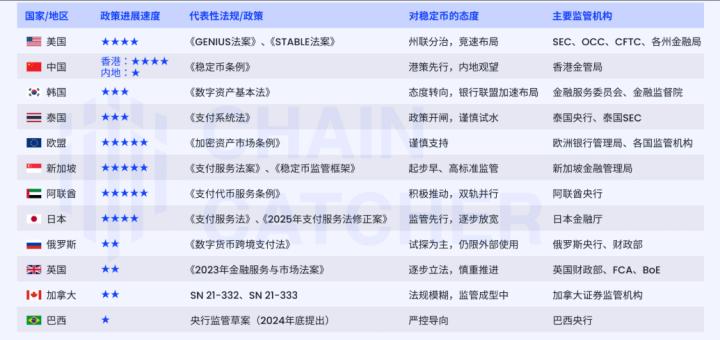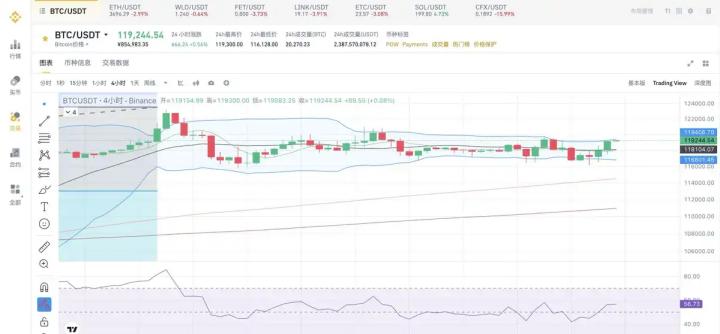Written by: A Wang
Stablecoins are the most representative practical tool in the digital currency field, demonstrating how blockchain provides a new and efficient infrastructure for traditional financial payment systems. Over the past year, the total market value of stablecoins has grown by over 50%; it has been accelerating since Trump's re-election in November. Currently, the total market value of stablecoins exceeds $250 billion and is at the forefront of a breakthrough. This scale has already carried the efficient circulation of global trillions of payment funds.
Industry insiders are well aware of the value of stablecoins: they perfectly embody the core capability of blockchain to "instantly transfer funds and value", making it possible to build a commercial closed loop on-chain - payment. However, payment goes far beyond "point-to-point transfer", and the true enterprise-level scenarios are much more complex than "sending money from A to B".
Currently, stablecoin applications for enterprises mostly adopt a "Stablecoin Sandwich" architecture, a term first proposed by Ran Goldi, Senior Vice President of Payment and Network at Fireblocks in 2021: using blockchain to replace traditional payment channels for horizontal value/fund transfer, while still relying on the old financial payment system at both ends.
While this design brings significant improvements, it also limits the complete release of blockchain advantages. This is also the point that Airwallex CEO Jack criticizes, not seeing cost reduction and efficiency improvement from stablecoin payments.
Therefore, based on Jesse's article "Unpacking the Stablecoin Sandwich", we will examine how stablecoins are applied to global cross-border payments from a global fund transfer perspective. This article will:
Disassemble the existing global cross-border payment system;
Analyze the specific improvements of the stablecoin sandwich architecture in fund management, B2B payments, and card network settlement;
Discuss how to overcome challenges at both ends of the stablecoin sandwich and let blockchain's value run through the entire process.
I. Stablecoin Payment Background
Among the many applications of stablecoins, B2B enterprise payments are the most notable. The latest Artemis report provides data from front-line payment companies: last year, monthly B2B enterprise payments increased from $770 million to $3 billion. Fireblocks also reported that stablecoins account for nearly half of its platform transaction volume, with 49% of customers actively using stablecoins for payments.
Internal data from top enterprises better reflects market segment size. According to the FXCIntelligence report, BVNK (considered one of the largest players in the field) processes about $15 billion annually, with approximately half coming from B2B enterprise payments - the largest subsegment of cross-border payments. Conduit's annualized transaction volume is $10 billion, with the company estimating this represents about 20% of the global B2B stablecoin cross-border payment market; Orbital's announced scale is $12 billion annually.
Specifically, global payment usage is increasingly widespread because when financial payment infrastructure becomes more obsolete, the advantages of blockchain-based stablecoin infrastructure are magnified; SWIFT and the correspondent banking network successfully facilitate over $100 trillion in global payments annually, yet enterprises and banks still face enormous complexity and delay issues.
From a macro perspective, faster and more interactive financial payments can directly amplify global GDP: enterprises can collect payments more quickly, and funds can enter downstream processes faster, thereby reducing management costs and capital occupation caused by settlement delays. When the settlement cycle is compressed from "days" to "seconds" or "minutes", its chain reaction will sweep through the entire economy. At the same time, the existence of verifiable standards allows financial innovation to occur globally without permission for the first time - a qualitative change that the traditional financial system cannot reach. III. Application of Stablecoins in Global Payments Given the advantages of stablecoins mentioned above, we can now see some specific global payment use cases that benefit from stablecoins. We will explore the current operation of global fund management, B2B enterprise payments, and card organization network settlements, and discuss the applications and advantages of stablecoins in various fields. 3.1 Enterprise Fund Management Taking enterprise fund management as an example: for instance, a company has an obligation to pay in currency b in country B on a certain date. They must prepare fund transfers from country A in currency a before the payment is due. This is a prepaid fund process, and the enterprise finance team must consider the preparation time required to execute the payment on time. The team must open an account at a local bank to execute the payment on time. Sometimes, to support this, the company may seek short-term loans from partners in the region. The longer the global fund settlement is delayed, the greater the foreign exchange risk exposure, and the higher the capital requirements for the enterprise finance department. For enterprises that simply want to execute global payments, managing derivatives to hedge currency risks and calculating short-term liquidity adds significant operational overhead. Stablecoins simplify this system by eliminating the requirements for controlling international settlement delays. We can see the role of the "stablecoin sandwich" structure: although the initial deposit and withdrawal at both ends still must touch the fiat currency system, the existence of stablecoins enables smooth fund flow between the two fiat currency "ramps". By using stablecoins, the entire process is divided into local transfers in countries A and B, with the blockchain completing global liquidity settlement between the two parties in the middle. (Note: To make this exchange successful, there must be sufficient liquidity on-chain to exchange A stablecoin for B stablecoin.) 3.2 B2B Enterprise Payments The process of global B2B enterprise payments is similar to enterprise fund management, but B2B scenarios can gain greater benefits because B2B payments are often more complex, and their success may affect other aspects of enterprise operations. In such payments, banks in different countries are often directly linked to the delivery of a service or goods. This means that all parties will be more sensitive to the payment progress. For example, in the "pre-financing" diagram mentioned earlier, the cost of pre-financing may depend on the real-time status of an inbound payment. Moreover, if the payment channels required by enterprises are relatively niche, they often need to complete fund transfers through multiple international transit routes - such routes may lack clear progress reporting mechanisms and are limited by banks' non-24/7 operating hours, easily prolonging payment times. Let's look at another example: Company A in country A wants to pay company B in country B, and the banks between the two countries do not frequently conduct business. If bank A in country A has no direct connection on any suitable channel to country B, this payment must take an extra detour. When these B2B cross-border payment processes are executed through stablecoins in the middle of the chain, additional benefits will emerge at the enterprise level: - Both parties can clearly and instantly manage and monitor payment status. - Financing can be directly linked to time-sensitive raw materials or delivery nodes, allowing enterprises highly dependent on timely goods arrival to avoid major risks or delays. - With reduced risks, capital costs decrease, and capital turnover speed increases; as stablecoin integration solutions mature, this effect will bring significant productivity improvements globally. Similar to the enterprise fund management scenario, correspondent bank links, pre-financing needs, and most foreign exchange exposures are essentially removed. The entire process is compressed from the past 3 days to just seconds, without considering market closures, thereby significantly reducing and simplifying working capital requirements. 3.3 Card Organization Network Settlement In card organization networks, issuing institutions send payments to acquiring banks on behalf of cardholders, and acquiring banks receive payments and credit them to merchant accounts. These banks do not settle debts directly; they are all connected to VisaNet, where Visa settles net amounts between banks during bank business hours on working days. Each bank must maintain a prepaid balance to enable timely wire transfers. Visa has been testing the use of stablecoins for settlement between acquiring and issuing banks since 2021. This method of using stablecoins replaces wire transfer processes, instead using USDC on Ethereum and Solana. After completing card authorization on a specific date, Visa uses USDC to debit or credit from the banks of both transaction parties. Since this system operates within VisaNet, its net effect benefits network partners. This is most similar to the closed-loop system of XBMT, but the vast scale of the card organization network benefits issuing/acquiring institutions (because they previously had to manage global payments). The advantages of stablecoins are similar to fund management, but these advantages belong to banks within the network: they can reduce capital requirements needed for timely international transfers, thereby avoiding foreign exchange risks. Moreover, the openness, verifiability, and programmability of blockchain lay the foundation for credit and other financial basics between banks within VisaNet. IV. In Conclusion Through the previous discussion, we have seen that the "stablecoin sandwich" is indeed useful in some scenarios; however, most stablecoin applications currently remain at this sandwich structure and have not broken through further. Why is this? In reality, very few enterprises truly use on-chain payments and stablecoins. As long as any link still needs to touch the fiat currency track, we must add bread on both sides of the "sandwich". We have just added some protein to the original vegetarian sandwich, but it is still a sandwich. The ultimate goal of stablecoin payments is to completely remove the bread on both ends. When enterprises and consumers fully embrace stablecoins, the entire financial and commercial cycle can be completed on the blockchain, and we will no longer be limited by backward traditional tracks. Once financial institutions and enterprises settle completely with stablecoins, they will release unprecedented commercial scale. As global friction in enterprise construction, operation, and service significantly decreases, the global GDP growth curve will more closely align with the true consumption speed of internet goods, services, and content. So the essence of PayFi is actually: Stablecoin Payments + On-Chain Finance. If we can completely get rid of the sandwich structure and build more on-chain financial services at both ends, the global circulation speed of funds/value will enter an unprecedented height.






